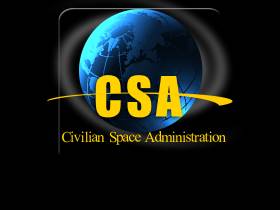|
1. What does it mean when you say Not for Profit?
This means that the CSA uses it's funds generated to expand on the organization itself through various methods.
These methods include: research, building, advertising, and so on.
2. What do I get by being a volunteer or helping financially?
A. Volunteers and Supporters gain a life time membership in the CSA.
B. They will be first on the list for training for manned space flights.
C. They are the ones that will control remote probes that are launched into space.
D. They are freely allowed to enjoy the fruits of our labor by being the first ones to use future technologies and
devices.
E. They will be part of a team and can take pride in calling themselves a CSA Explorer.
3. How can I volunteer or donate to the CSA?
We have multiple research projects available that you can join by going to the Research Projects section of the website.
To donate you can use the donation links found at the top and bottom of this page.
We have links to affiliate programs that will put some money in your pocket as well as help fund the CSA.
We even have links available that will help advertise our site, or you can advertise any way that you feel would
help the CSA.
A note on this, we do not tolerate spamming, or fake advertising.
If you do advertise just shoot us an email to let us know so you can be added to our list of volunteers and get your
membership.
4. What are some of your short term goals?
We have a list provided on the site under CSA GOALS. However immediately we are looking for Volunteers, as well
as always seeking help with funding and advertising.
On the Technology side we have the research projects with new ones being added all the time. We are also looking
at purchasing land for our first physical facility to deploy our equipment.
We are seeking funding for our probe launcher. As well as designing the launcher, which will be capable of launching
our first series of remote controlled probes.
We are also developing a series of our first remote controlled probes. Currently we are developing 3 different models
each designed for a specific task.
5.
|

